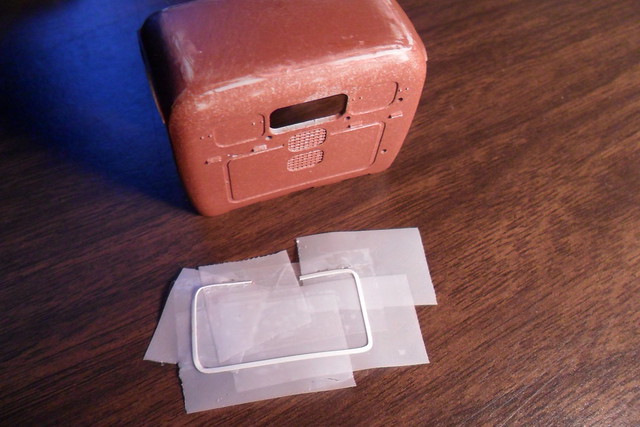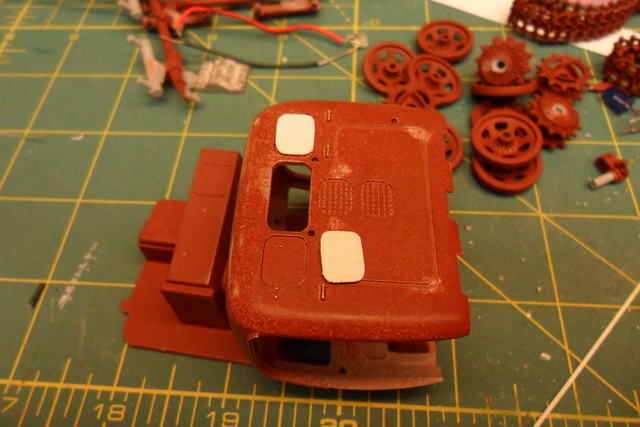
Speaking of gems, these must be the crown jewels of Hasegawa's 1970s braille scale vehicles. National pride really encourages model companies to do their best tooling!
Both first came out in 1974, according to Scalemates. The molding is so good, I decided to do some detailing on each in an effort to get the whole model up to the quality of the basic kit. The starter truck has rigging added to the boom that supports the drive shaft that spins the aircraft prop, and a bit of chain to hold up the drive shaft, like on the real thing. I also added canvas doors to the sides of the cab, made from paper and cellophane, glued with Micro Crystal Clear and painted with Humbrol. I wanted the starter truck to appear older, so it's much more heavily weathered than the fuel truck, and painted in a different tan color.
The fuel truck has a refueling hose made of solder, with a nozzle I fabricated from various bits, made to scale from drawings I found online. Both vehicles have windshield wipers I made from tiny slivers of styrene. I dirtied up the windshields with extremely thinned enamel and used a toothpick to clean the dirt away as the windshield wipers would do.
Hasegawa bills the fuel truck as Japanese Army/Navy, but of course it's got the Army star, not the Navy anchor. I've got another of these in my stash that's going to get the star shaved off and replaced with an anchor, then be painted blue to represent a naval fuel truck. The starter truck is simply billed as army, and I don't know offhand whether the Japanese Navy used them. None of the images of Toyota starter trucks in my references shows one in naval service.
Oh, by the way, the starter truck this kit represents may not be a GB. According to the Wikipedia article, it is instead a KC, a version simplified for wartime production. However, the article also states that the KC had a plywood cab (the kit clearly represents a steel cab) and that the KC wasn't produced before November 1943. Japanese Army Air Force Aces 1937-1945 by Henry Sakaida shows a good photo of a Toyota starter truck starting a Ki-27, and it looks exactly like this kit. The caption makes the credible claim that it's 1939. At any rate, the photo cannot have been taken as late as November 1943!
So these models are another example of the unplanned impulse modeling than can result from raiding kits for parts: I needed a figure for my Fine Molds midget sub, and converted one to represent the sub's captain, but also built these kits I was raiding. The included figures are obviously in army uniforms. And nicely sculpted figures they are! More national pride at work, no doubt.

















































